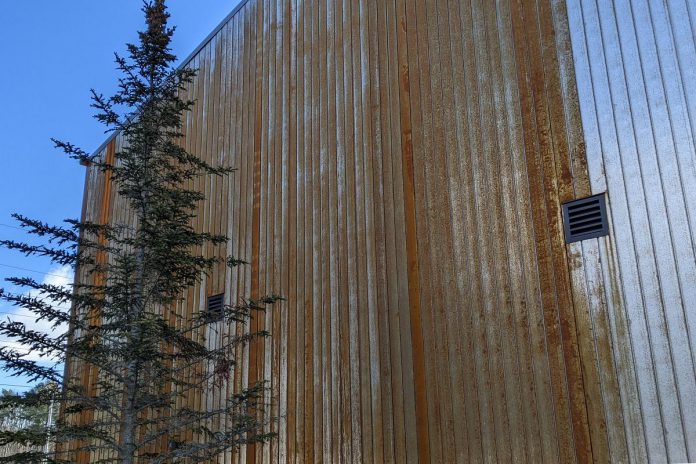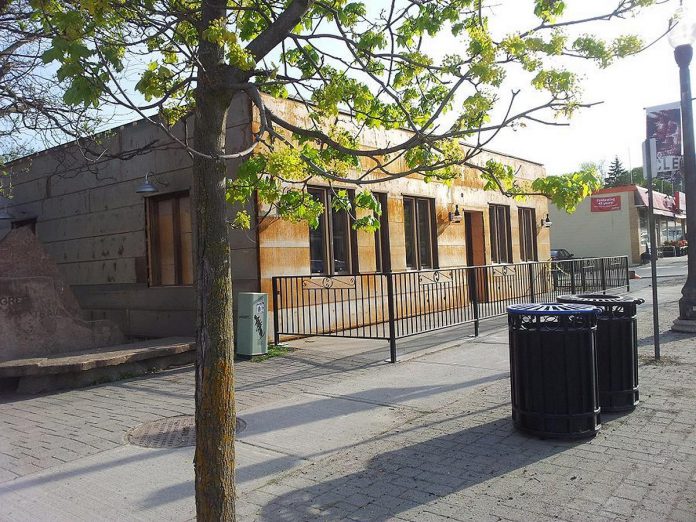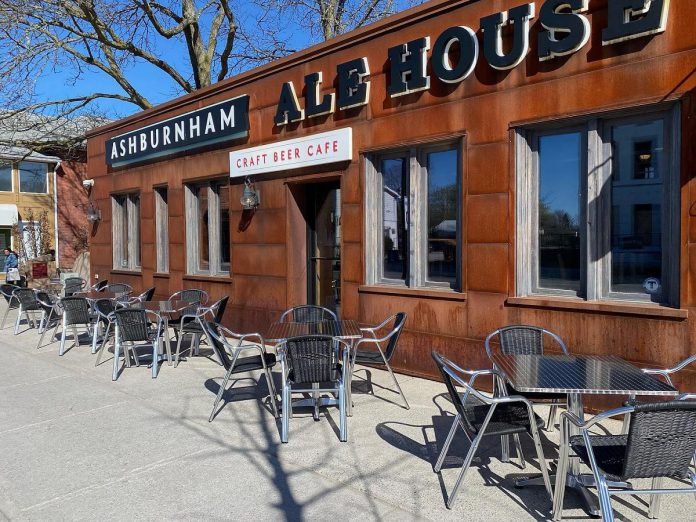
If you’ve recently walked or driven past the new Canadian Canoe Museum under construction at 2077 Ashburnham Drive in Peterborough, you may have wondered about the streaks of rust on the grey steel siding surrounding the building.
It’s not a defect with the steel siding — the rusting is intentional. According to a recent progress email from the museum, the steel siding that encompasses the building’s exterior is designed to rust with exposure to the weather.
Known as Corten or weathering steel, the high-strength low-alloy steel will form a stable surface with a rust-like patina finish over time. This finish guards against future corrosion and prevents the need to paint the steel in the future.
For an idea of what the museum’s final exterior finish will look like, you can visit Ashburnham Ale House on Hunter Street East in East City, which was clad in Corten steel siding when it was built in 2013. Today, now fully weathered, it has a deep dark rustic colour and texture.
As for the new museum, along with the Corten steel siding, installation of windows and the roof are now all completed. Around the museum’s exterior, trees have been planted, pavement is being poured in several areas, and light posts are being installed. Grading for the constructed wetland basin has also now been completed.
At the back of the building facing Little Lake, boulders from the current museum have been brought to the site and repurposed for the museum’s Campfire Circle, and the Canoe House is being prepared for the move-in of on-the-water equipment including canoes and kayaks.


Inside the new building, drywall for the Atrium is being finished and painted, and wood ceiling and wall treatment are being installed as well as light fixtures. Work is also well underway on the Gathering Room — which will host events, educational experiences, and other functions — as well as on the Upper Terrace, which connects the space to the outdoors.
The first canoes, kayaks, and other exhibition materials have been hung in the Exhibition Hall, and 300 watercraft have been moved into the Collection Hall, with around 200 still to be moved in.
Work also continues for the Living Traditions Centre, which will house the Artisan Studio, Canoe-Building Studio, and Millshop. A glass garage overhead door has been installed that will connect creators, artisans, and builders to the outdoors while they are practising or learning a skill.

Several other areas of the new museum are also beginning to take shape as well, including a library, archive and research Room, a kitchen adjacent to the Gathering Room, washrooms, and a staff area.
The museum’s construction team includes Unity Design Studio (formerly Lett Architects), Chandos Construction, DG Biddle and Associates, Engage Engineering, Kelson Mechanical, Lancer Electric, and LEA Group.
Along with private donations, the museum is being funded by the Government of Canada through the Department of Canadian Heritage and the Federal Economic Development Agency for Southern Ontario (FedDev Ontario), the Weston Family Foundation, the City of Peterborough, Peterborough County, and the Province of Ontario.



























